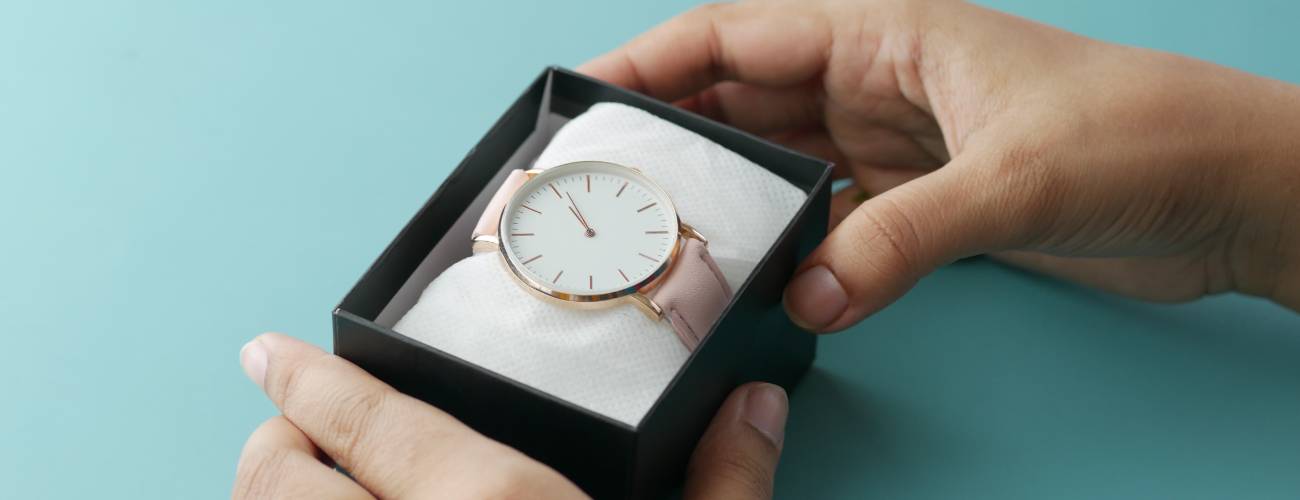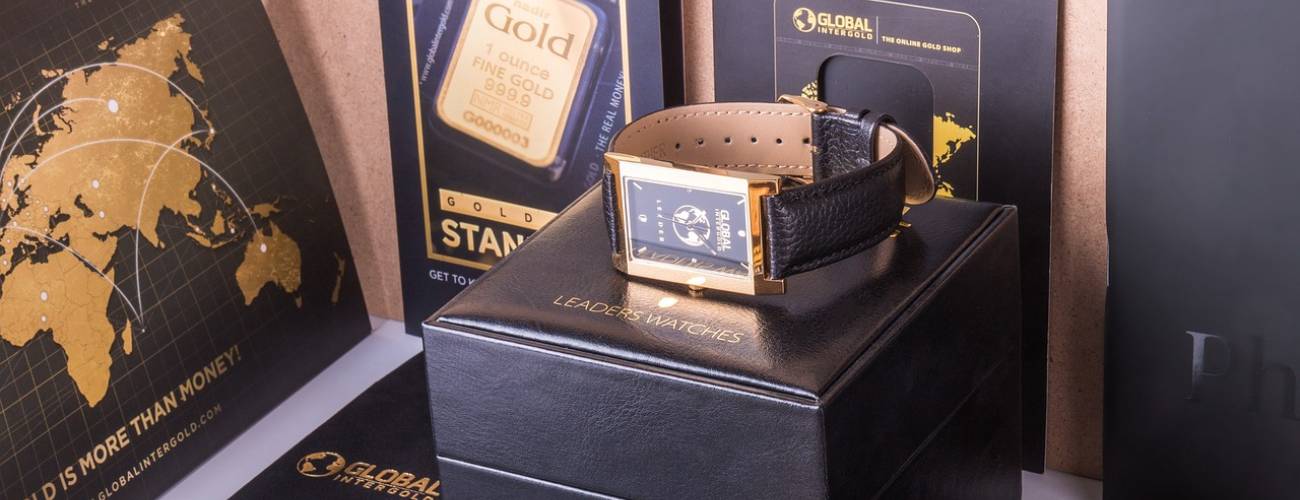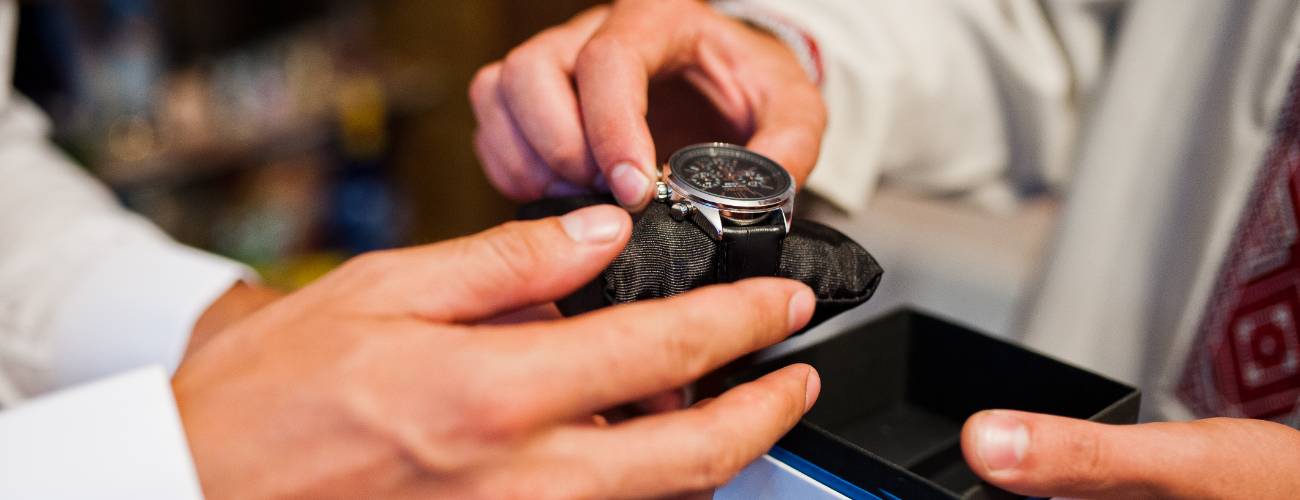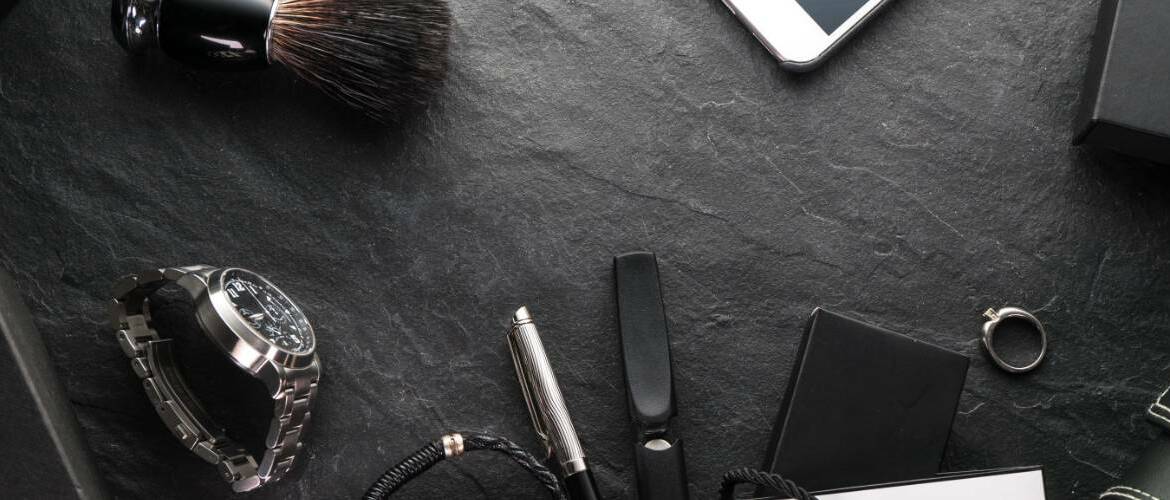Must-Have Items In Your Watch Cleaning Box
To ensure longevity, retain precision, and keep them looking as exquisite as they were when first worn, regular and proper cleaning of your watch is imperative. A comprehensive watch cleaning box, equipped with essential tools and solutions, can be the key to maintaining your watch’s timeless beauty and performance.
Importance Of Regular Watch Cleaning
Consistent watch cleaning isn’t only about aesthetics; it is also about ensuring that the intricate mechanics of your watch function efficiently. Dust, sweat, and other contaminants can interfere with its performance. A clean watch is more accurate, lasts longer, and keeps its resale value intact.
Basic Watch Cleaning Items
Soft Cleaning Cloth
A lint-free cloth wipes away fingerprints, smudges, and minor contaminants without scratching the watch’s surface.
Gentle Cleaning Solutions
Mild soapy water or dedicated watch cleaning solutions are ideal. They help remove grime without harming the watch’s materials.
Brushes and Applicators
Soft-bristled brushes and Q-tips are great for reaching nooks and crannies, especially the areas where the band meets the watch case.
Air Blower
Air blowers are helpful when blowing away dust particles from the watch surface, ensuring a particle-free finish.

Advanced Cleaning Tools
Ultrasonic Cleaners
Ultrasonic cleaners utilise sound waves to create microscopic bubbles in a cleaning solution, producing a cleaning action that reaches even the tiniest crevices. This is especially useful for metal bands and intricate jewellery watches where dirt tends to accumulate.
While they offer a thorough clean, ultrasonic cleaners are not suitable for all watches. Delicate components, gem-set timepieces, or vintage watches might not fare well under ultrasonic cleaning. Therefore, it’s paramount to be sure of your watch’s compatibility before proceeding.
Loupes and Magnifiers
Ensuring a watch is spotless requires attention to detail. Loupes and magnifiers provide an enhanced view, allowing one to inspect the watch closely for minuscule dirt particles, scratches, or imperfections that the naked eye might miss. Professionals and enthusiasts alike rely on these tools for a meticulous cleaning process, ensuring no corner is overlooked.

Specialised Cleaning Kits for Various Watch Materials
Different watch materials demand bespoke care. For instance, gold watches might require gentler cleaning agents than stainless steel ones, and leather straps need conditioners to keep them supple. Specialised cleaning kits are curated with these specifics in mind, providing tailored tools and solutions for different watch materials, ensuring optimal cleaning without causing inadvertent damage.
⌚️ You might like this guide: Gold vs. Silver Watches: What’s More Desirable?
Safety and Protection Tools
Watch Holder or Stand
While cleaning, it’s essential to have a secure base for the watch, ensuring it remains stationary. A watch holder or stand firmly grips the watch, preventing potential accidents, like drops or slips, which could lead to scratches or more severe damage. These tools are particularly crucial when dealing with luxury or vintage timepieces where even minor mishaps can be costly.
Protective Gloves
The oils and acids naturally present on human skin can transfer to the watch during cleaning, potentially tarnishing metal or degrading leather. Protective gloves, especially those made of lint-free material, not only safeguard the watch from these contaminants but also offer a better grip, minimising the risk of accidental drops.
Dust Covers
During breaks or post-cleaning, dust covers protect the watch from airborne particles. These covers are especially crucial if cleaning spans over hours, ensuring the freshly cleaned watch remains pristine.

How To Clean Your Watch Properly
Pre-Cleaning Inspection
Before diving into cleaning, inspect your watch under a good light source. Identify areas with the most grime, note any existing scratches or damages, and understand the general state of the watch. This pre-assessment informs the cleaning process, ensuring focus on areas that need the most attention.
Cleaning the Watch Band
Remove the band from the watch if possible. For metal bands, use a brush and a gentle cleaning solution, working between links and clasps. Leather bands should never be submerged; instead, use a damp cloth and leather cleaner or conditioner to wipe them down gently.
Cleaning the Watch Face and Case
A damp, soft cloth is ideal for the face. The case, often exposed to more dirt, might require a soft brush and soapy water. Always work gently to avoid scratching the surface or damaging the watch’s internal components.
Post-Cleaning Inspection
Reinspect the watch under good lighting. Check if all dirt has been removed, if the band and face are free from smudges, and ensure no damage occurred during the cleaning process.
Professional Watch Cleaning Services
While regular home cleaning maintains a watch’s aesthetics and function, sometimes a professional touch is required. If the watch shows signs of internal moisture, significant oxidation, or movement malfunctions, or if it’s a treasured vintage piece, consider seeking professional help.
Finding a Reputable Watch Cleaner
Recommendations from fellow watch enthusiasts, reviews on watch forums, or referrals from the watch’s manufacturer can lead to a reputable cleaner. Ensure they have experience with your watch type or brand and possess the necessary certifications.

Costs and Considerations
Engaging professionals comes at a price, but it’s a worthy investment for a watch’s longevity and performance. Costs vary based on the watch’s brand, material, and the level of cleaning required. Always discuss potential additional charges upfront to avoid surprises.
Maintenance and Storage
Regular Maintenance Schedule
To keep your watch in optimal condition, establish a regular maintenance routine. Depending on wear frequency and conditions, consider a thorough cleaning every 2-3 months.
Storing Cleaning Tools
It’s important to store your watch and cleaning tools correctly. Keep it all in a cool, dry place, preferably organised in a dedicated toolkit. Regularly inspect and clean these tools to ensure they remain in top condition.
Proper Storage of Watches
Post-cleaning, watches should be stored away from direct sunlight or moisture. Original cases, watch boxes, or padded pouches are ideal. For watches not worn regularly, consider winding them periodically to keep the movement in good health.
Common Mistakes to Avoid
Over-Cleaning
Excessive cleaning can be detrimental. Over-cleaning, especially with abrasive tools or chemicals, can wear out the watch parts prematurely and strip away protective coatings.
Using Incorrect Tools and Solutions
Always ensure you’re using tools and solutions suited for your watch type and material. Avoid harsh chemicals, and when in doubt, consult the manufacturer’s guidelines.
Damaging Delicate Parts
Watches, especially luxury or vintage ones, have delicate components. Always handle with care, exert gentle pressure, and avoid forcing any part during the cleaning process.
Your Watch Will Thank you
In the realm of timepieces, cleanliness isn’t just about aesthetics; it’s pivotal for optimal functionality and longevity. Whether you’re an avid collector or own a singular cherished piece, understanding the intricacies of watch care can ensure your timepiece remains a beacon of precision and elegance.
Frequently Asked Questions
What types of cleaning solutions are safe to use on different watch materials?
For gold and stainless steel watches, a blend of lukewarm water with a few drops of mild liquid soap is often a safe choice. It’s gentle enough not to tarnish the shine yet effective in removing grime. When it comes to leather, it requires a more specialised approach. Direct exposure to water can degrade the leather, so a designated leather cleaner or conditioner is ideal. Always ensure you’re using solutions free from harsh chemicals or abrasives to preserve the integrity of the materials.
How often should I clean my watch, and does the frequency vary based on the type of watch or how it’s used?
Cleaning frequency largely depends on the watch’s usage. For everyday wear, cleaning every 2-3 months can maintain its lustre. However, if you use your watch in more demanding conditions like sports or diving, monthly cleaning might be prudent. For watches worn occasionally, a bi-annual cleaning can suffice. Regardless of frequency, always check your watch for dirt accumulation or moisture, as these are indicators that a cleaning is due.
Can I use household items like toothbrushes or common cleaning agents for watch cleaning, or do I need specialised tools?
While household items, like soft-bristled toothbrushes, can serve in a pinch, they might not be as effective or safe as specialised tools. Toothbrushes can help in scrubbing bracelet links and lugs, but care must be taken not to scratch the surface. Common cleaning agents can be too harsh or leave residues, potentially damaging the watch. Investing in tools specifically designed for watch cleaning ensures you’re providing the best care without risking damage.
Is it safe to use ultrasonic cleaners on all types of watches?
Ultrasonic cleaners are excellent for metal watch bracelets and cases, but they aren’t suitable for all watches. Vintage watches, timepieces with gemstones, or watches with delicate parts might get damaged. If considering an ultrasonic cleaner, first ensure the watch is water-resistant. Remove the watch movement and only clean the case and bracelet. Always consult your watch’s manual or manufacturer’s guidelines before using such devices.
How should I store my watch cleaning tools to keep them in good condition?
Storing your cleaning tools in a cool, dry place is essential. Avoid places with high humidity, as it can degrade the tools, especially brushes. After every cleaning session, ensure your tools are cleaned and dried properly. For brushes, rinse them with clean water and let them air dry. Periodically inspect tools for wear or damage and replace them when necessary.

